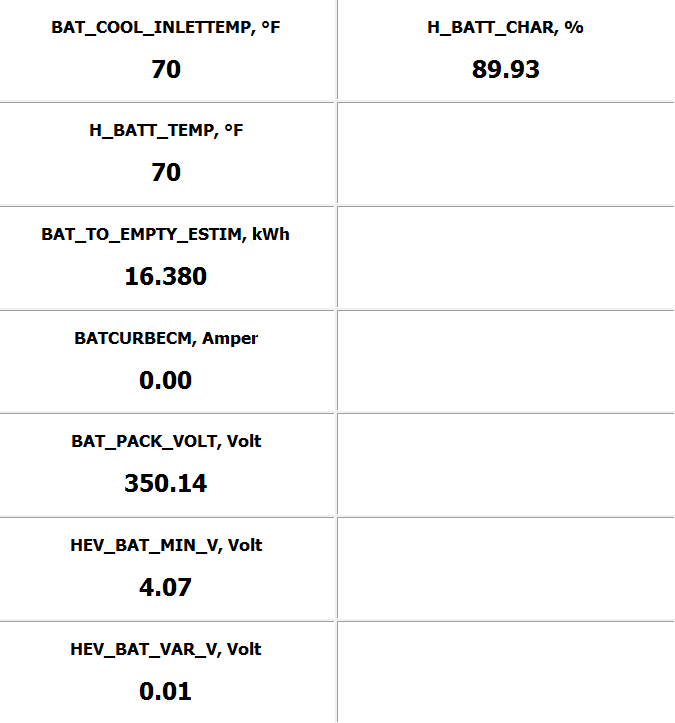hybridbear
Well-known member
Thank you. Now FORScan can display additional decimal places. In the case of the voltage variation, the car reports 3 decimal places. This provides additional clarity to the situation. I'd be curious to see what you see.michael said:I will try to re-test for you, but can't do it til next week.
I've only really paid attention to the variation at rest with various levels of SOC. I haven't tried much with WOT because I don't really have many spots where I could accelerate that quickly or drive that fast. I'll have to try to do that.



























